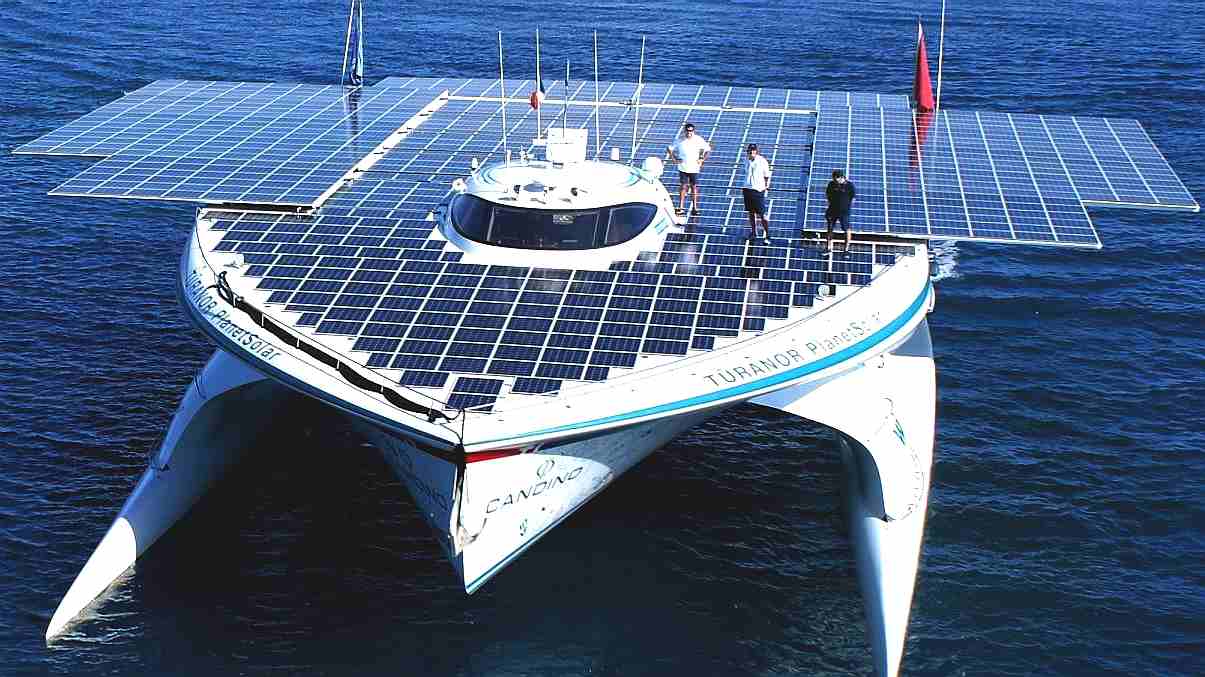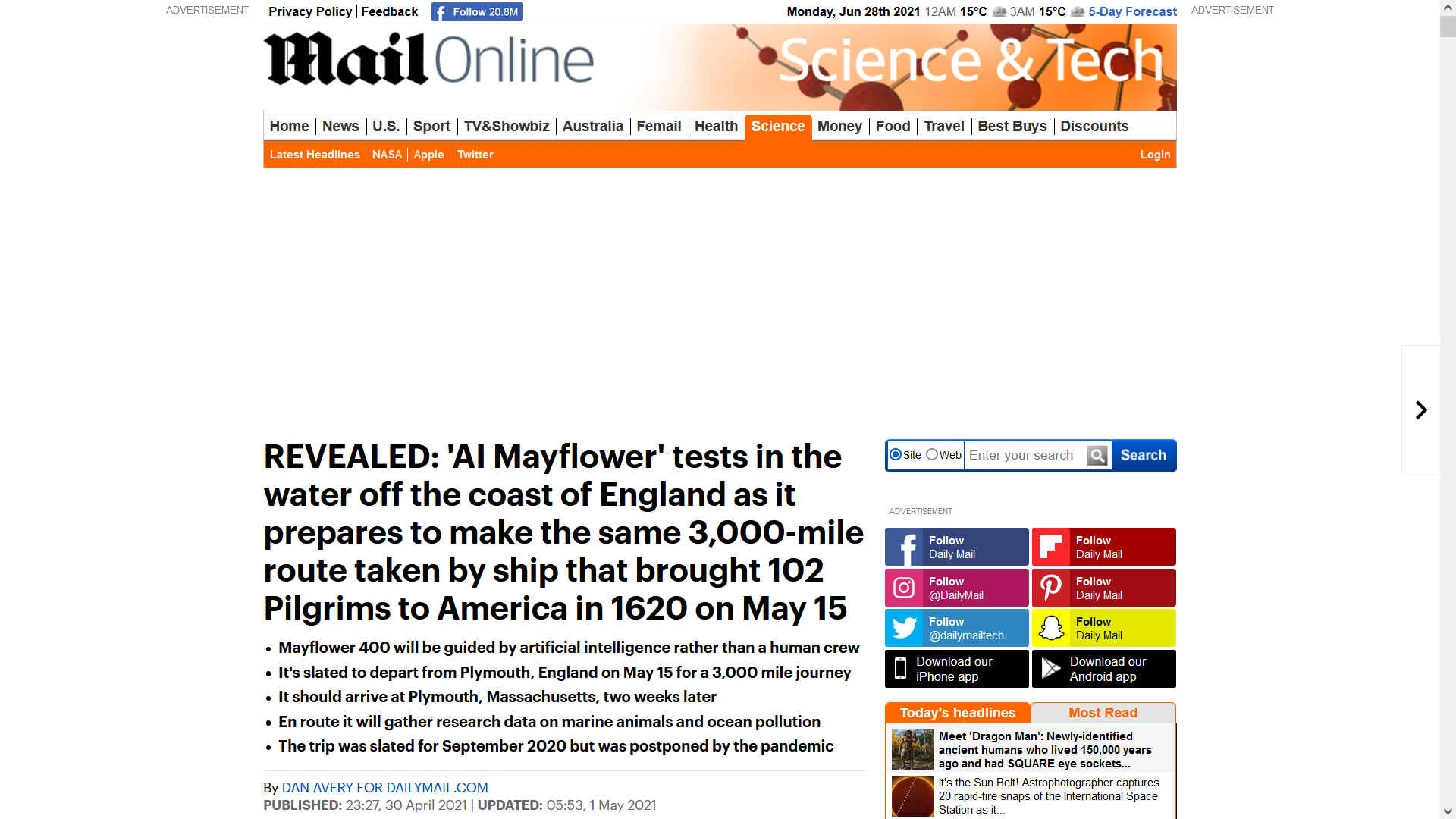
MAYFLOWER
PILGRIMS VOYAGE - MAS's direction of travel is the reverse of the
Scout and Voyager autonomous Atlantic
attempts that took advantage of trade winds. The Mayflower will be
heading into prevailing winds and currents. If sail powered, she would need to tack. But powered by a
diesel
engine, with support from the deck mounted solar panels, there may be no need for
that - except, that we saw her struggling when out at sea. Energy from nature is used to power the onboard AI and satellite
communications. Many media reports inaccurately refer to wind power as a
feature of the MAS, but you can plainly see that there is no wind
turbine or wing-sail on this craft. Lidar, Cameras and Radar are
commonly used to navigate reaper drones, robotaxis
and driver-less
trucks. There is no reason why such a system should not perform well
on the high seas.
DAILY MAIL 30 APRIL 2021 - REVEALED: MAYFLOWER TESTS IN WATER OFF COAST ENGLAND
REVEALED: 'AI Mayflower' tests in the water off the coast of England as it prepares to make the same 3,000-mile route taken by ship that brought 102 Pilgrims to America in 1620 on May 15
-
Mayflower 400 will be guided by artificial intelligence rather than a human crew
- It's slated to depart from Plymouth, England on May 15 for a 3,000 mile journey
- It should arrive at Plymouth, Massachusetts, two weeks later
- En route it will gather research data on marine animals and ocean pollution
- The trip was slated for September 2020 but was postponed by the pandemic
The world's first fully autonomous ship [boat]
is set to make its maiden voyage across the Atlantic next month.
Inspired by the ship that brought the Pilgrims to North America, 'Mayflower 400' will be guided by
artificial intelligence rather than a human crew.
If all goes well, it will depart from Plymouth, England on May 15 and arrive at
Plymouth, Massachusetts, about 3,000 miles and two weeks later.
The original Mayflower, which transported 102 Pilgrims and other passengers, took 10 weeks to reach its destination in 1620.
Mayflower 400 was set to embark on its transatlantic cruise last September for the
Mayflower's 400th anniversary, but was delayed because of the coronavirus pandemic.
The 50-foot trimaran will take roughly the same route as its ancient predecessor, only it won't carry any passengers or crew.
The Pilgrims were escaping religious persecution and sought to establish a settlement in the New World when they set sail from Plymouth, England, on September 16, 1620.
Just over 400 years later, the Mayflower 400 will gather critical scientific data about the ocean.
Powered by solar energy, it was unveiled in 2017 as a partnership between IBM, the
University of
Plymouth, autonomous craft specialists MSubs, and the marine-research nonprofit
ProMare.
'The single biggest challenge is the ocean itself,' said ProMare founder
Brett
Phaneuf.
'No ship has ever been built that can survive whatever the ocean could throw at it.'
With no captain or onboard crew, Mayflower 400 uses AI to traverse the ocean in its quest for data and discovery.
It has a sophisticated system of cameras and radar to continue learning about its environment.
Having an uncrewed craft provided an advantage in the 'unforgiving environment,'
Rosie
Lickorish, a specialist in emerging technologies at IBM, told AFP.
'Having a ship without people on board allows scientists to expand the area they can observe,' Lickorish said.
A team in the UK will monitor the vessel 24 hours a day, ready to take control of the ship if necessary.
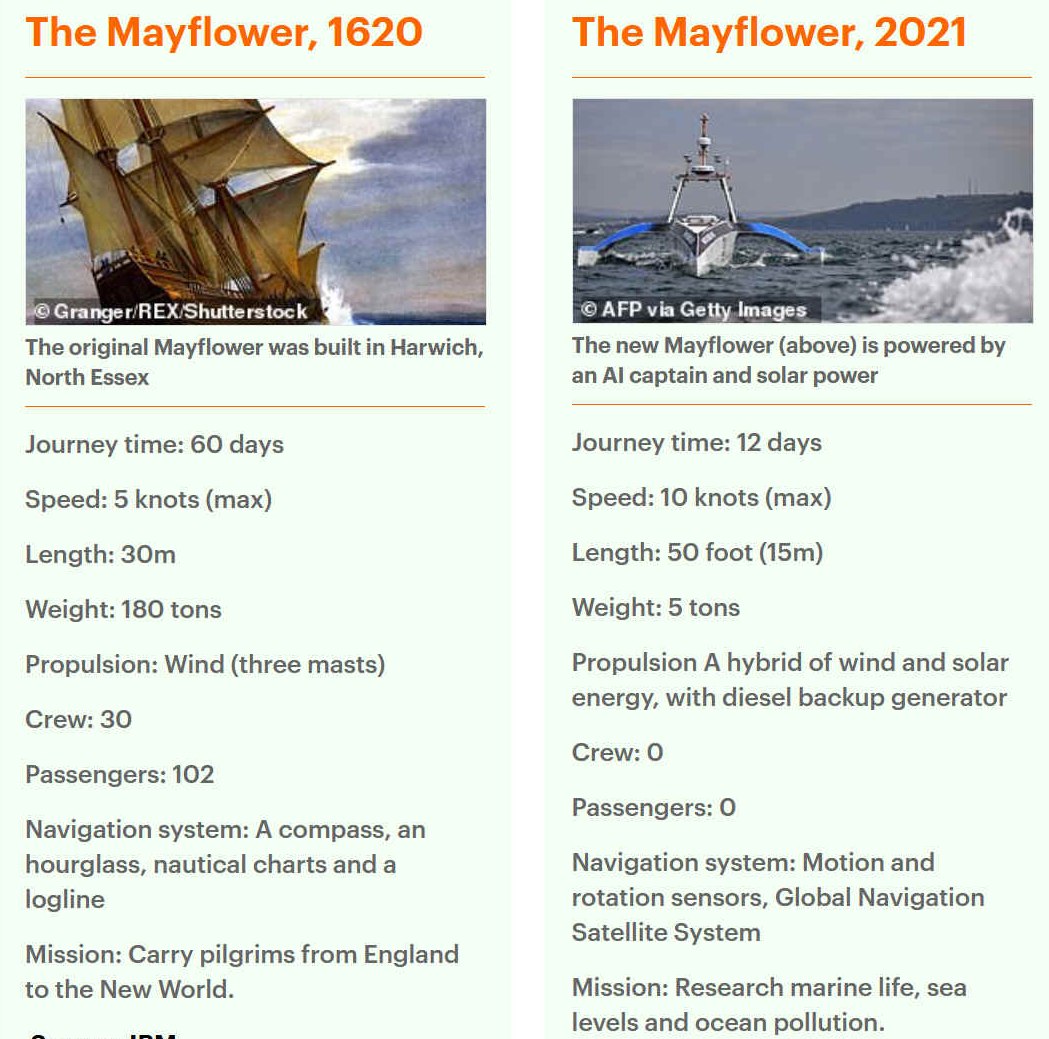
Built in Poland to ProMare's specifications, the 5-ton, 50-foot-long vessel incorporates many advanced marine architecture features, all designed to withstand the stresses of extended trips at sea.
'The key to putting an autonomous ship at sea, without humans at the helm, was computing technology that could power onboard intelligence,' according to
IBM.
The Mayflower 400 will gather critical data on whale
populations, sea levels, microplastics in the ocean, and other research topics.
That data will be made available to researchers free of charge.
The vessel relies on an onboard AI Captain that uses computer vision, automation software and Watson, IBM's AI platform.
The 'AI Captain' was trained with more than 1 million nautical images so it can recognize ships, bridges, land, debris and other hazards.
The AI Captain can communicate verbally with other ships in the area to warm them of its approach or convey other information.
Human operators will program the Mayflower's destination, but it will figure out its own course, factoring in the weather, ocean currents,
collision regulations and other variables.
MAS can also react to ocean traffic in real time using a combination of radar, cameras, and the
Automated Identification System (AIS), which transmits information such as the Mayflower's latitude and longitude to other boats.
By Dan
Avery
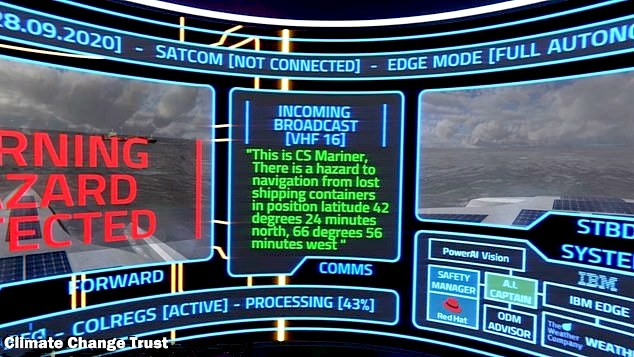
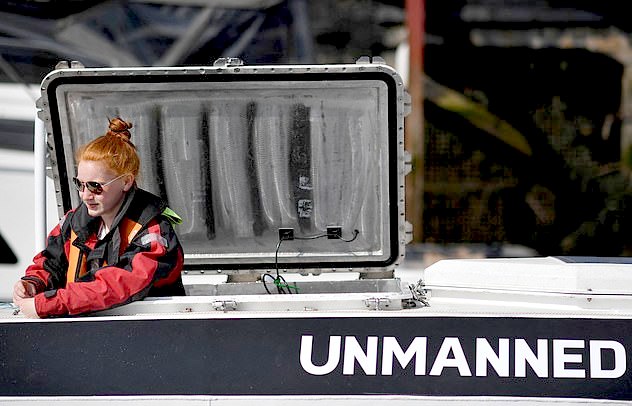
Without humans on board, the ship 'becomes a machine rather than a floating hotel,' said Phaneuf.
'If you take the human factor out of ships, it allows you to completely
re-imagine the design,' he said.
'You can focus purely on the mechanics and function of the ship.'
While the original Mayflower was a wooden sailing vessel, MAS is a 'highly-sophisticated trimaran with an even more sophisticated interior', said Goetz Linzenmeier, chairman and founder of
Aluship, which built the hull.
'In this new Mayflower this is also a technological adventure, fortunately no life is at risk,' said Linzenmeier.
The interior is also different from the living quarters of the original ship: Instead of beds, there are just rooms with science experiments.
One will test samples of seawater throughout the journey and store it in bottles for a staffer to inspect when the ship arrives in Massachusetts.
MAS has already been on several trial runs over the last six months ahead of its transatlantic voyage.
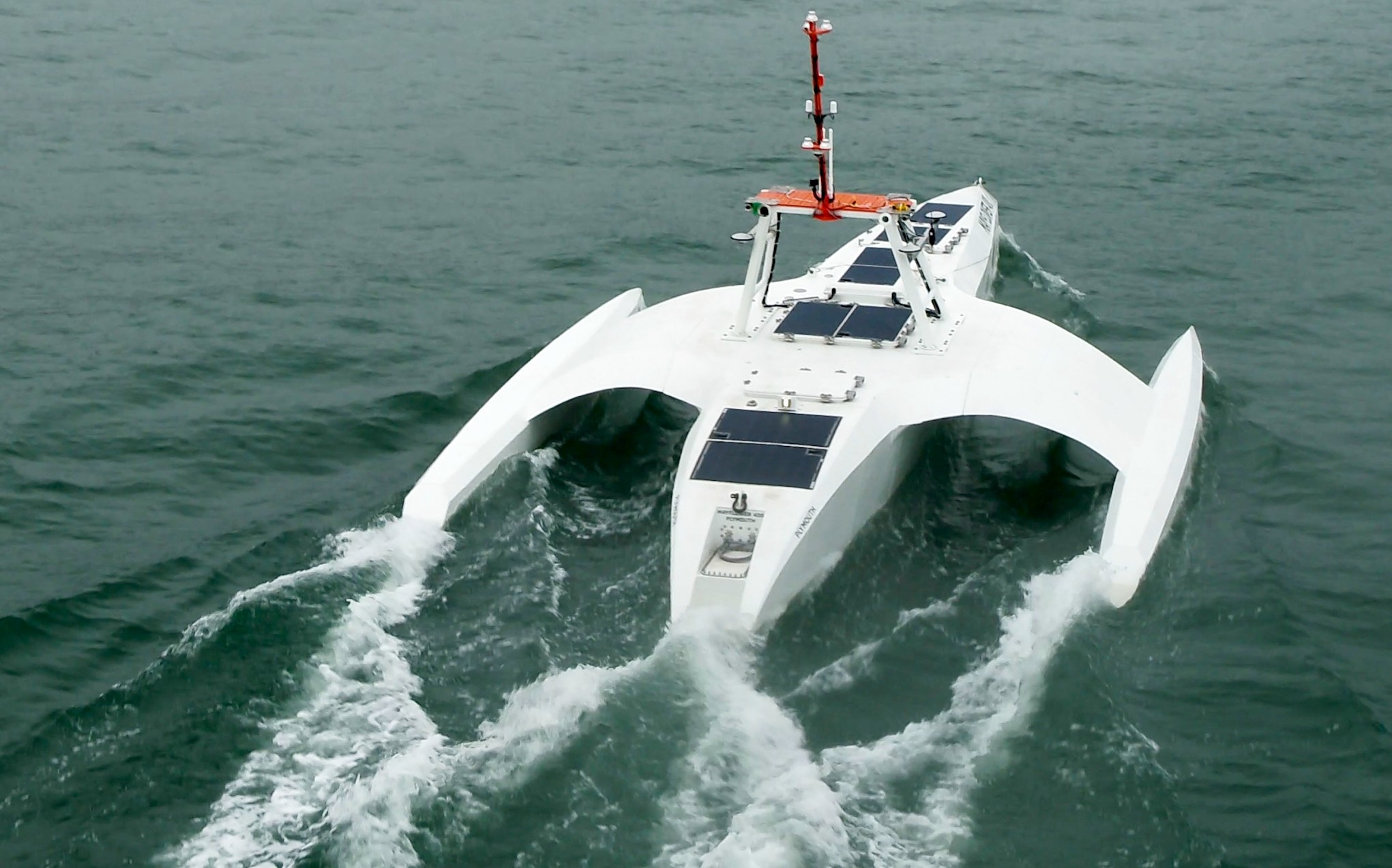
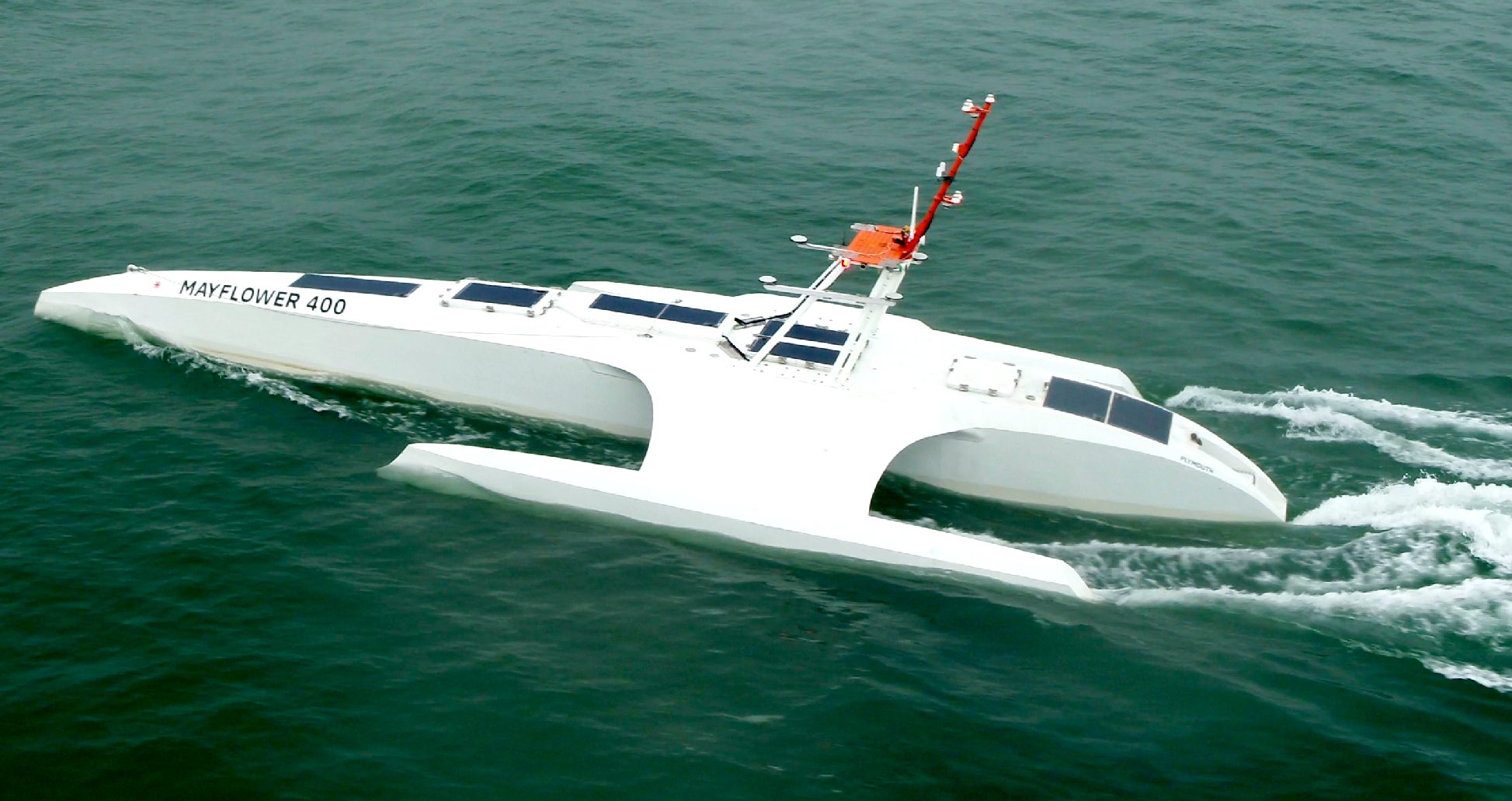
TRANSATLANTIC
EVENT CALENDAR 2021
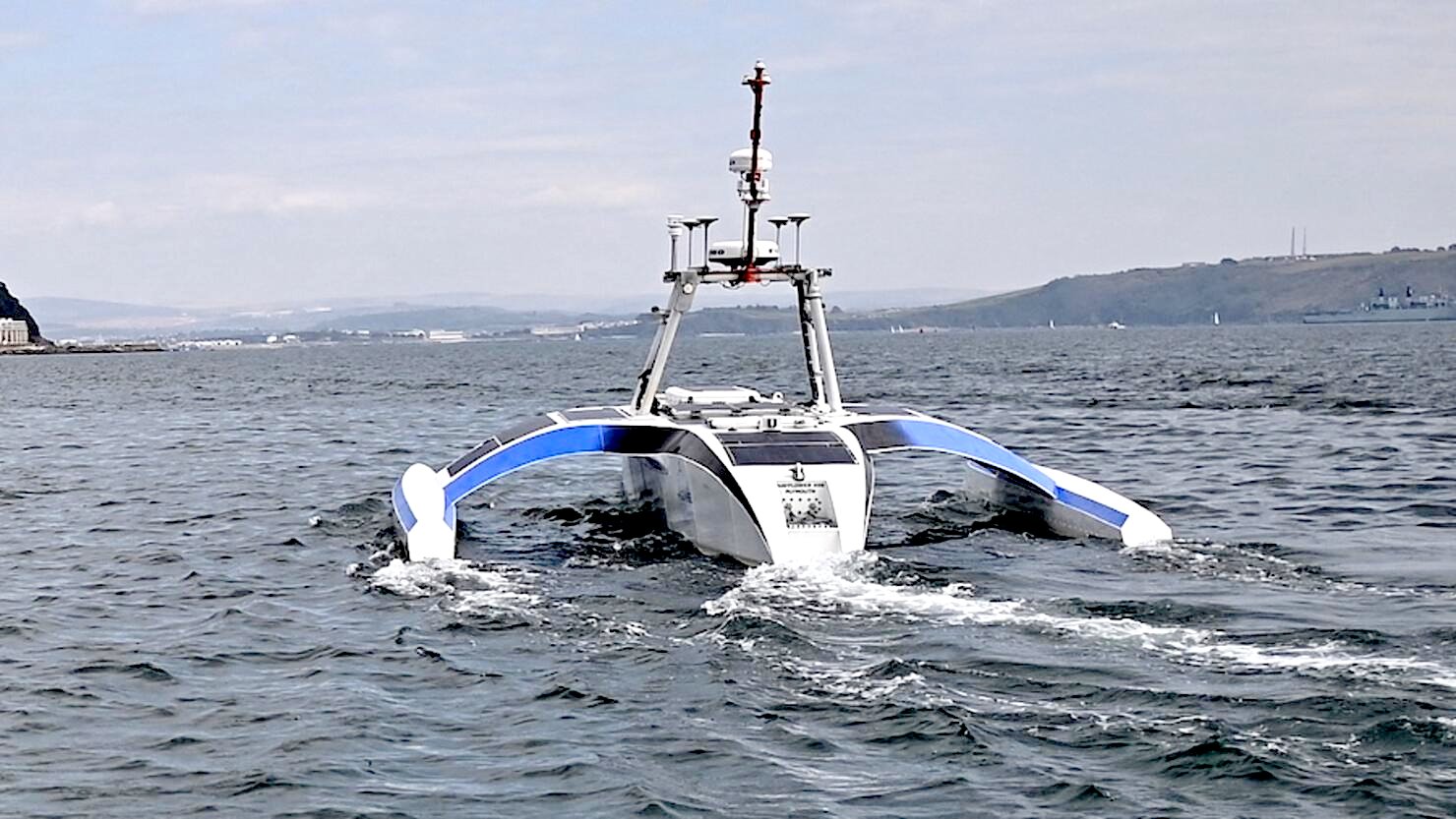
The
IBM Mayflower
MAS 400 is an
autonomous
trimaran powered by a
diesel
engine, piloted by a solar powered artificially intelligent
computer
system developed by IBM called 'AI Captain.'
A
BIT OF HISTORY
The
first solar boat to travel around the world was the PlanetSolar,
coming home on the 4th of May 2012. Computing power was not as advanced
as it is today, when PlanetSolar set off on 27th September 2010,
following the Sunshine Route, first shown in London at the 1994/95 Boat
Show. Then in January 2013 a patent specification for a COLREGs
compliant, unmanned autonomous navigation system was filed by a BMS
engineer ( now our IP) with the suggestion in 'Claims' for using a solar
powered trimaran (patent granted 12 June 2019) as a suitable hull
configuration. This patent also included wind energy harvesting as
originally advertised for the Mayflower 400.
JOURNEY
TIME
The original wooden
30-meter Mayflower took 66 days to carry
the Pilgrims,
Founding Fathers from the U.K. to what is now the U.S. The voyage would
have involved a lot of tacking,
because sailing ships cannot sail directly into the wind. But the new
sail-less aluminium
boat should take two to three weeks (14-21 days) depending on how strong
the prevailing trade
winds are, and assuming no technical glitches or marine accidents -
the whole point of a COLREGs
compliant navigation
system.
LINKS,
CONTACTS & REFERENCE
https://www.dailymail.co.uk/home/search.html?s=&authornamef=Dan+Avery+For+Dailymail.com
https://www.dailymail.co.uk/sciencetech/article-9531119/First-autonomous-ship-Mayflower-400-readies-voyage-following-Pilgrims-route-New-World.html
